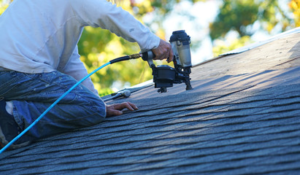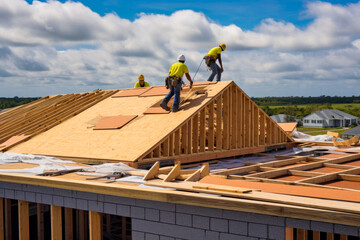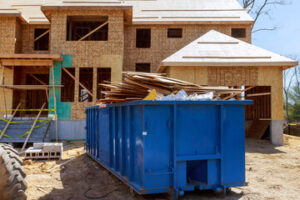Grasping pest lifecycles is essential to developing effective control strategies. Many natural forces affect pest populations, including climate, availability of food and shelter, and disease.
Louisville Pest Control and prevention can be more effective than treatment if you know when pests are most vulnerable. This article will explain how to reduce the risk of infestations in your home or business by targeting each stage of the pest life cycle: Egg, nymph, pupa, and adult.

Egg Stage
All insects have a life cycle, but the stages of that life cycle vary from pest to pest. Understanding pest life cycles is essential to making informed decisions about whether or not an insecticide should be used and to determine the effectiveness of that control measure.
The first stage in the insect life cycle is the egg stage. Depending on the species of insect, females lay anywhere from 200 to 500 eggs that hatch into some immature form. For the Lepidoptera group (butterflies, moths, and their relatives), the eggs hatch into caterpillars that eat and grow. Other pests, such as weevils, beetles, and sawflies, produce worm-like larvae that feed on the plant tissue they occupy and may injure plants by chewing leaves, stems, or roots or causing rot by sucking juices or laying disease-causing feces.
After the larvae mature, they find a safe spot to form a pupal chamber. In some cases, such as with weevils and beetles, the larvae form a cocoon or some other protective cover for this phase of their life cycle. In other cases, such as with mosquitoes and their relatives, the larvae form an aquatic pupal habitat where they stay alive by feeding on microorganisms in the water. The pupal stage lasts until the pest is ready to emerge as an adult.
Identifying the correct life cycle stage and applying an insecticide to interrupt the development process is essential to successful pest control. Some insecticides are only effective against pests at specific life stage intervals, and other control measures such as biological management require that the right life stage predators be available to eat the damaging pests.
The use of forecast pest models, such as Degree Days, can help to determine the optimum time for a pesticide application. These models project the timing of a pest’s appearance in the garden using forecast temperatures and humidity levels (see Table 1). This information can help prevent damage from pests by not spraying them when they are at the most vulnerable stage of their life cycle.
Larval Stage
The eggs of most pests hatch into larvae, or maggots in the case of caterpillars. These are the feeding and growing stages of the pests’ life cycle. The larvae consume food to grow and develop, shedding their skin many times as they mature.
Most insects grow by a process called allometry, in which the growth rates of different body parts accelerate at varying times. This enables the insect to adjust to different habitats and environmental conditions and helps to reduce its vulnerability to predators and parasites.
Some larvae are adapted to specific environments such as aquatic species (mosquitoes, for example) or free-living forms that spend their adult lives on land (frogs, toads, and lizards). For this reason, they have well-developed locomotor structures, which facilitate their movement across the water or land surface. In some cases, the larvae can store food to use for transformation into the adult form.
Larval growth is usually very rapid. It is the most important factor determining the rate of increase in pest population size. This is why pest control measures are most effective when a plant pest’s population is low.
When the larva reaches its final instar, it sheds its skin for the last time and enters a motionless phase of inactivity known as the pupal stage (chrysalis for butterflies). The insect now starts to resemble its adult form, and its organs also undergo major changes in structure and function.
The pupal stage is when the pest is most vulnerable to any insecticide application, whether it be a natural or synthetic chemical. It is also when the pest may start to overwinter in protected sites or seek new food sources in anticipation of the adult insect’s return to its feeding and mating habits.
This means that any pesticide application must be made at the right moment in the life cycle to be effective. This is why it’s important to understand pest life cycles and to recognize the moments in the cycle where intervention can have the greatest effect. This can prevent a pest infestation from becoming unmanageable, or allow an effective Sydney pest control strategy to be implemented before the problem gets out of hand.
Pupa Stage
When a pest enters the pupal stage, it is almost ready to become an adult. During this time, movement is stopped and metabolic activity continues. A pupal insect has miniature wings that can be used for flight once it emerges from the cocoon as an adult. The length of the pupal stage varies among insect species and may be influenced by temperature, availability of food, and disease.
Only certain insect groups complete a full life cycle, including an egg, larva, and pupal stage, leading to the adult that can reproduce. These include the Coleoptera (beetles), Diptera (flies, mosquitoes, gnats, and nematodes), and Lepidoptera (butterflies and moths). The emergence of an adult is the final step in the insect’s life cycle and often requires a blood meal to complete its maturation.
Understanding pest life cycles can help determine the effectiveness of pest control measures. For instance, a cockroach that reaches the adult stage can lay many more eggs. If the nymphs of a cockroach population are controlled before they reach the adult stage, the number of future generations will be greatly reduced. The same holds for other pests that are most vulnerable at particular stages of their lives, such as the nymph or pupa.
Insects that have entered the nymph or pupa stages are more likely to be affected by insecticides and other pest control methods. This makes it important to monitor the populations of these stages and take action before a critical mass of pests is present.
Likewise, rodents can be controlled before they have a chance to breed and increase their numbers. This is done by implementing targeted traps and baits rather than generalized pesticide treatments like a granular or liquid application.
As the world struggles to address issues like pest resistance, we must look for new ways to manage our insect populations and prevent them from becoming a major problem. Rotating pesticide chemistries is one essential piece of this puzzle, but knowing the insect’s life cycle can play an equally significant role. By identifying the most vulnerable stages, we can develop a plan to disrupt the pest’s life cycle and keep it from returning.
Adult Stage
The adult stage is where pests become visible to the human eye, and it’s also the final stage of their life cycle. It can last from a few days to months, depending on the species of pest and environmental conditions. Once this phase is complete, the pest is fully mature and ready to reproduce. This is why pest control professionals need to be aware of an insect’s lifecycle when designing a management plan.
During this time, pests will have the opportunity to reproduce and pass on their DNA to the next generation of offspring. This process is what leads to pest infestations and why it’s so essential to take preventative measures to stop the lifecycle before it begins.
Understanding the different stages of an insect’s lifecycle can be beneficial in many ways, from helping to identify a pest problem and choosing appropriate control methods to encouraging the growth of helpful insects that can provide natural pest control. Pests that are disrupted at their vulnerable life stages can be more easily controlled than those that have reached the adult stage.
The majority of pests go through four distinct life cycle stages: egg, larval, pupal, and adult. While some pests have short life cycles, others can take years to reach the adult stage and continue the cycle anew. The duration of each pest’s lifecycle depends on the temperature, environment, food availability, and other factors.
Most pests go through complete metamorphosis, which involves changing from an egg to a juvenile to a full-grown adult. Pests that experience incomplete metamorphosis, such as grasshoppers and true bugs (stink bug and squash bug), hatch from eggs into tiny nymphs that resemble the adults. These nymphs grow, molt, and develop wings (unless they are wingless, such as in the case of cockroaches) until they reach the adult stage.
Throughout the nymphal stage, an insect can develop resistance to certain types of pesticides, especially during this time when it is called for repeated molting. This is why it’s essential to utilize pesticides during the larval and nymphal stages, as well as when preventing pests from entering the next phase of their lifecycle.






